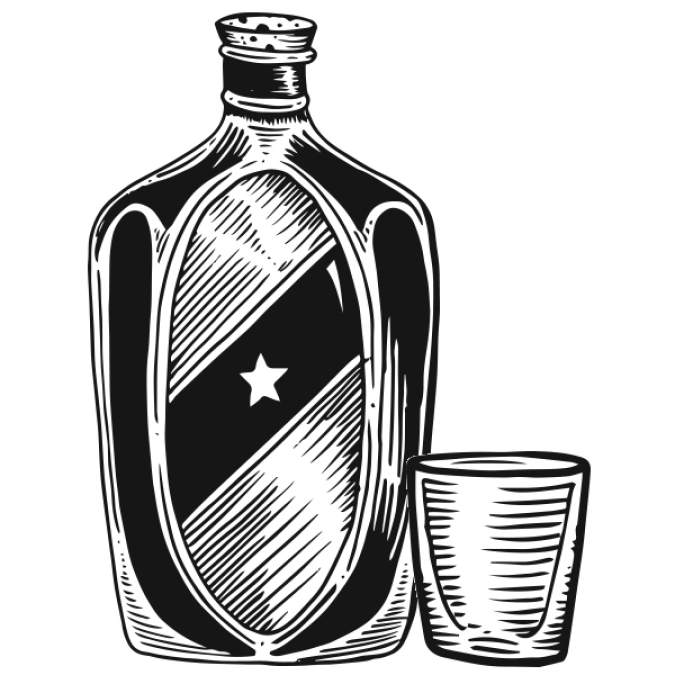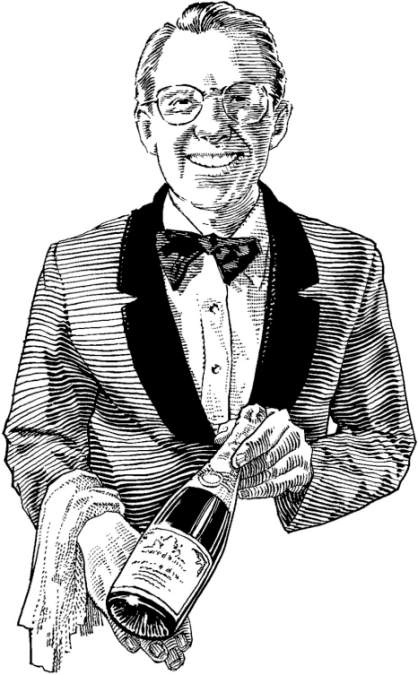For decades, discussion of alcohol production in Washington was centered on beer or wine. More recently, enterprising distillers are tackling a whole array of different spirits, from vodka and gin to absinthe and eau de vie. Several, however, have set their sights on the pinnacle of American distilling: bourbon. To understand why this is at once both logical and daring, a bit of bourbon history is in order.
In its simplest telling, the long history of American alcohol production has involved fitting pre-existing Old World techniques to New World spaces and resources—from the California wine industry to apple-cider production throughout the Midwest and Northeast. Nowhere is that more evident than in our greatest contribution to the world of drinking, bourbon. A quintessentially American spirit, its history weaves together agricultural progress, a wealth of natural resources, a willingness to simultaneously adopt and reject European practices, and a slight outlaw mentality. Oh, and a bit of a sweet tooth.
At some point shortly after learning how to grow corn, pioneering Americans realized that if you ground it, fermented it, and distilled it, you could get drunk on it quicker than on beer. Since life on the frontier was often cold, grim, and harsh, drunkenness was seen by many as a desirable state. Furthermore, distilled corn kept longer than dried corn, which meant that if you stored it, you could get drunk for years to come, even if the corn harvest failed—which was of course when you’d need to get drunk most of all.
Eventually, distillers in Kentucky discovered that if you aged your corn hooch in charred oak barrels for a few years, the resultant liquid was far, far more enjoyable than the moonshine that everyone else had been drinking. Since these distillers happened to be living in and around Bourbon County, the name for the spirit became “bourbon” and a drink was born. To this day, the interplay of the sweetness of the corn and the caramelized sugars inside the oak barrels is bourbon’s defining flavor characteristic.
After that loosely accurate narrative, how about some clear-cut facts? Bourbon fits into the larger category of spirits made by aging a distilled grain spirit in wooden casks, generally oak. As with Scotch or Irish whisky, a bourbon producer has to meet certain requirements, from the composition of the initial mash (at least 51 percent corn) to the type of barrels used for aging (new, charred oak) to the proof (80 at minimum). Most important is the location: classically in Kentucky, but legally anywhere in the United States.
It should be said that wherever it’s made, bourbon is always going to taste like bourbon: toasty, rich, and somewhat sweet. “By the very nature of chemistry and federal law, bourbon is a pretty specific product,” says Orlin Sorensen, co-owner of Woodinville Whiskey Co. “You can alter mash bills [the mix of grains you begin with], yeast strains, and distillation proofs to achieve different distillate flavor profiles, but close to 70 percent of what you taste in a bourbon is the barrel influence. When you think about it, this makes sense. It takes five days to mash and distill and four to eight years to mature in a standard-size 53-gallon barrel, so it spends over 99 percent of its life in the barrel. The bulk of the flavor is imparted onto the spirit by the barrels, and the strict regulation surrounding those barrels and the ways they must be prepared ensure that there’s a baseline flavor standard that all bourbons meet.”
While the barrel does have a significant impact on the finished flavor, choices made well before aging also have an effect. The precise mixture of grains used in a mash goes a long way in determining the eventual taste: Bourbons with a high percentage of corn (well above the 51 percent required by law) tend to be richer and sweeter, while those that cut the corn with rye or other grains will maintain a spicier flavor and a leaner texture.
Experimenting with that mash bill is something every distillery has to do, but the learning curve has been accelerated in Washington. The state legislature passed a craft-distilling bill in 2008 that legalized sampling onsite, provided that distilleries stay below a certain volume (20,000 gallons a year) and use at least 51 percent Washington grains in their spirits. Virtually all the state’s distilleries have opened since then, with some setting their sights on bourbon—and thus facing some unique challenges.
While it typically takes at least four years in barrels for bourbons to mature, local distilleries wanted to have a product on the market sooner. Some turned to micro-barrels: Aging in smaller casks increases the surface area a whiskey can contact, theoretically speeding the process.
Additionally, western Washington’s climate is significantly different from Kentucky’s. To age properly, some of the spirit needs to evaporate over time—one of the reasons that air-permeable oak casks are the preferred vessel. This evaporation is harder to achieve in our cooler and wetter climate, so Woodinville Whiskey ages their barrels in eastern Washington. “We are currently evaporating at a higher rate than a warehouse in the South would, due to our drier climate,” Sorensen says.
Of course, each ounce of whiskey that disappears into thin air is one you can’t sell, but it’s a trade-off that Woodinville Whiskey is willing to make. “More evaporation traditionally produces a more complex bourbon. And that’s definitely what we’re tasting when we pull samples.”
Even with plenty of Northwest inventiveness and know-how, anyone who sets out to make bourbon does so with an eye on Kentucky. It’s still the source of the majority of the bourbon made in the U.S., and the nexus of knowledge, techniques, and experience in the art. For Sorensen, it was the perfect place to find a mentor.
“We did a lot of research and preparation, from visiting the Kentucky distilleries to hands-on distilling courses to books to apprenticeships,” Sorensen says. “We spent months developing our products. But by far the biggest asset has been being mentored by David Pickerell, former master distiller for Maker’s Mark. He’s worked with us on everything from building the distillery and selecting equipment to developing our products. Knowledge like his is invaluable, and we’ve been fortunate to absorb some of his decades of experience making whiskey.”
It remains to be seen if Washington’s bourbon can establish its own identity, or merely be an echo of Kentucky’s. Kirby Kallas-Lewis, owner of Oola Distillery, says that “Eastern Washington grows some of the best grain and corn in the world, and that allows us to make exceptional spirits. As we get more established, we can experiment with more unique whiskies that will highlight individual terroir.”
Sorensen seconds that sentiment, proclaiming that once the industry matures, “Each producer will have a terroir like wine producers do. I personally believe the climate of a given region will have the largest impact on the characteristics of the matured whiskey. That’s definitely what we’re tasting when we pull samples.” E
food@seattleweekly.com







